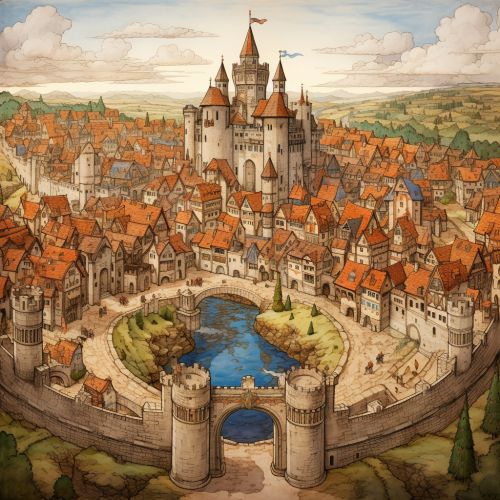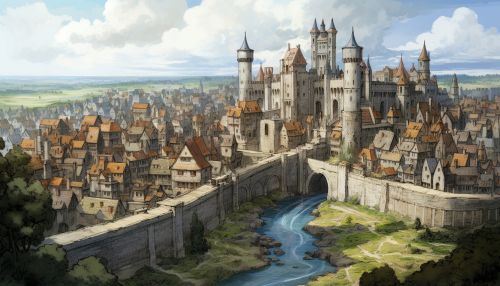Medieval Cartography
Introduction
Medieval cartography refers to the study and practice of map-making, or cartography, during the Medieval Period. This era, spanning from the 5th to the 15th century, witnessed significant advancements in geographical knowledge and mapping techniques. The maps created during this period not only served practical purposes such as navigation and territorial demarcation but also held symbolic and religious significance.


Origins and Influences
The roots of medieval cartography can be traced back to the classical civilizations of Greece and Rome. Greek scholars like Claudius Ptolemy laid the foundations of scientific cartography, developing principles of map projection and geographical coordinates that would influence medieval map-makers. Roman itineraries and road maps, known as Peutinger Tables, also provided a basis for medieval cartographic practices.
Characteristics of Medieval Maps
Medieval maps, known as mappaemundi, were distinct in their form and content. Unlike modern maps, they were not primarily intended for navigation or accurate representation of geographical features. Instead, they were symbolic representations of the world, often with a religious or cosmological focus.
Orientation
One of the defining characteristics of medieval maps is their orientation. Unlike modern maps, which are typically oriented with north at the top, medieval maps were often oriented with east at the top. This orientation, known as oriental orientation, reflects the religious and cultural significance of the east in the medieval world view.
Symbolism and Allegory
Medieval maps were rich in symbolism and allegory. They often depicted biblical events, mythical creatures, and exotic lands described in travel narratives. For example, the Hereford Map, one of the most famous medieval maps, includes illustrations of Noah's Ark, the Tower of Babel, and the Garden of Eden, among other biblical scenes.
Geographical Inaccuracies
While medieval maps are valued for their artistic and symbolic content, they are often criticized for their geographical inaccuracies. However, it is important to understand that accuracy was not the primary goal of medieval cartographers. Their maps were not intended to be used for navigation or to represent the physical world accurately. Instead, they were symbolic representations of the world, reflecting the religious, cultural, and cosmological beliefs of the time.
Development and Evolution
The practice of cartography evolved significantly during the Middle Ages. Early medieval maps were largely based on classical sources and were limited in their geographical scope. However, the expansion of trade routes and the advent of exploration during the High Middle Ages led to a greater understanding of the world's geography and the development of more detailed and accurate maps.
Early Medieval Cartography
During the early Middle Ages (5th to 10th century), cartography was largely influenced by classical sources. Maps from this period, such as the World Map of al-Idrisi, were based on Ptolemaic principles and depicted a limited geographical area, focusing primarily on the known parts of Europe, Asia, and North Africa.
High Medieval Cartography
The High Middle Ages (11th to 13th century) witnessed significant advancements in cartography. The expansion of trade routes, particularly the Silk Road, and the Crusades led to increased contact with the East and a greater understanding of its geography. This period also saw the development of portolan charts, detailed navigational maps based on compass directions and estimated distances observed by the pilots at sea.
Late Medieval Cartography
In the late Middle Ages (14th to 15th century), cartography was influenced by the Age of Discovery. Explorers like Marco Polo and Christopher Columbus expanded the known world, and their travels were documented in maps like the Cantino Planisphere. These maps, while still containing elements of medieval symbolism and cosmology, showed a greater emphasis on geographical accuracy and detail.
Impact and Legacy
Despite their perceived inaccuracies, medieval maps have had a lasting impact on the field of cartography and our understanding of the medieval worldview. They provide valuable insights into the religious, cultural, and intellectual life of the Middle Ages, reflecting the beliefs and values of the society that produced them.
Moreover, the techniques and principles developed by medieval cartographers laid the groundwork for the advancements in map-making during the Renaissance and the Age of Discovery. The portolan charts of the High Middle Ages, for instance, were a precursor to the nautical charts used by explorers during the 15th and 16th centuries.
